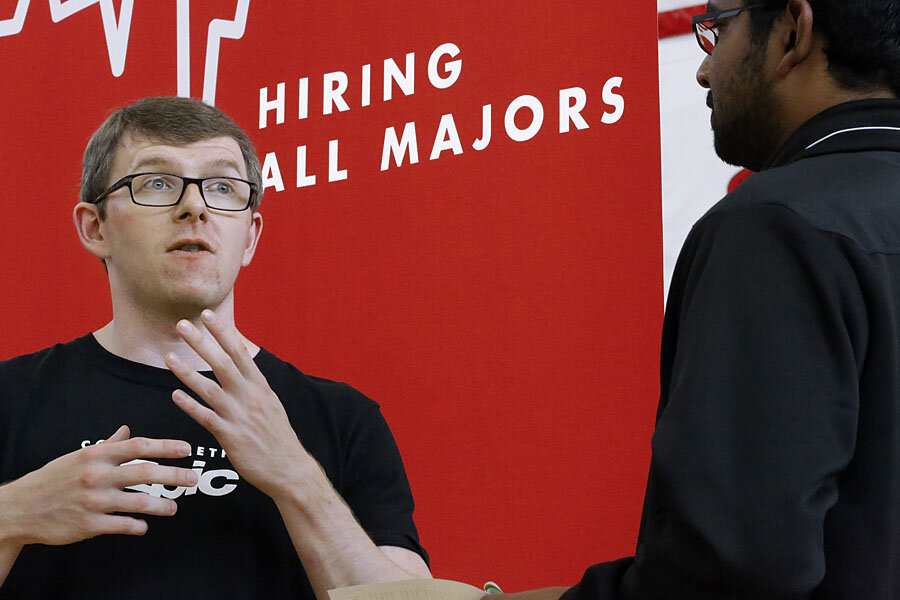Jobless claims in the US dip to an eight-year low
Loading...
| Washington
The number of Americans filing new claims for unemployment benefits fell last week to nearly its lowest level since before the 2007-09 recession, a sign of growing steam in the U.S. labor market.
Initial claims for state unemployment benefits dropped 1,000 to a seasonally adjusted 287,000 in the week ended Oct. 4, the Labor Department said on Thursday.
The data adds to the view that some strength is building in the U.S. economy. Last week, the Labor Department reported that the U.S. added 248,000 jobs in September, ticking the unemployment rate down below 6 percent for the first time since the start of the Great Recession.
"The labor market is entering into a potential boom," said Joseph LaVorgna, chief U.S economist at Deutsche Bank in New York.
Still, Federal Reserve officials remain concerned about persistently low rates of inflation and are not seen in a rush to hike interest rates.
Claims for the prior week were revised to show 1,000 more applications received than previously reported.
Economists polled by Reuters had forecast claims rising to 294,000 last week.
It was the third bit of goods news for the labor market in less than a week. Tuesday, the Labor Department reported that US job openings reached their highest level in 13 years in August. As the Christian Science Monitor reported Tuesday:
US job openings reached 4.84 million in August, according the Labor Department’s Job Openings and Labor Turnover survey (JOLTS), released monthly. That was much higher than the 4.7 million economists were expecting and an increase of over 200,000 openings from July, which was revised downward to 4.6 million jobs.
August had the most open jobs since 2001, the year the Labor Department began tracking JOLTS data.
Education and health care services led the charge with new open jobs, followed by leisure and hospitality. But despite the surge in open positions, hires in the US actually fell in every category but the government sector.
“Looking beyond the monthly volatility in hires, the August JOLTS data are consistent with diminished labor market slack,” Barclays Research economist Jesse Hurwitz wrote in an e-mailed statement.
Workers, too, are feeling better about their hiring prospects. The “quit rate,” which measures workers confidence in their ability to find another job, stayed near a post-recession high (1.8 percent). The number of unemployed job seekers per job opening fell to 1.98 from 2.10 in July.
Jobless claims have fallen steadily since the nation emerged from the recession and are currently lower than they were before the country's economic crisis began. Indeed, the level of claims last week was just 8,000 above a 14-year low reached in July.
The four-week moving average of claims, considered a better measure of labor market trends as it irons out week-to-week volatility, fell 7,250 to 287,750, its lowest level since 2006.
Prices for U.S. government debt held on to modest gains following the publication of the data. On Wednesday, prices had risen after minutes from the Fed's last policy meeting showed policymakers were concerned by a strong dollar and a global economic slowdown, which led investors to bet the Fed would delay interest rate hikes. U.S. stock index futures were little changed after Thursday's data was released.
The Labor Department said there were no special factors influencing the state level claims data.
The report showed the number of people still receiving benefits after an initial week of aid dropped 21,000 to 2.38 million in the week ended Sept. 27. (Reporting by Jason Lange, additional reporting by Richard Leong in New York; Editing by Chizu Nomiyama)







